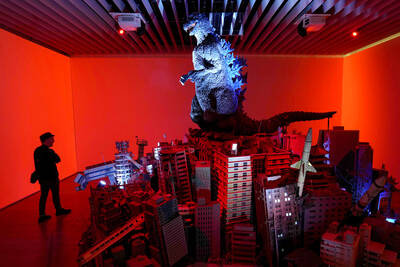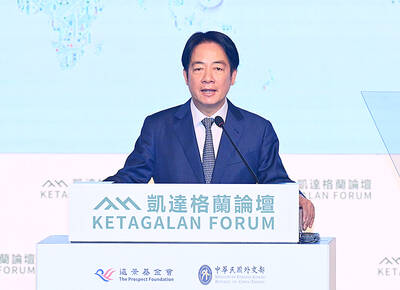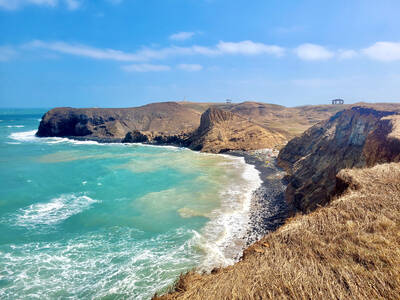The Italian writer Primo Levi, looking back on his time in Auschwitz, observed that in the Nazi death camps “the worst, that is, the fittest, survived.” The Counterfeiters, a brisk, tough new movie from the Austrian director Stefan Ruzowitzky, is in some ways an illustration of this axiom. Like most films about the Holocaust it is a survivor’s tale, and its protagonist, at least at first, seems long on guile and short on scruple. He is Salomon Sorowitsch, a master forger and a fixture of the Berlin underworld, and his yellow star is overlaid with a green triangle marking his status as a “habitual criminal.”
This causes some discomfort among some of the other inmates at the Sachsenhausen camp, where Sorowitsch is recruited for an unusual work detail. An enterprising Nazi officer, who had arrested Sally before the war for falsifying currency, enlists him in a scheme to counterfeit British and American money. The plan — based on the real-life Operation Bernhard — is to destabilize the economies of those countries with large-scale infusions of fake pounds and dollars.
In exchange for their labor, Sally and his colleagues are given extraordinary privileges: civilian clothing, weekly showers, sheets and pillows on their beds. And this fragile good fortune provides The Counterfeiters with its ethical center of gravity. The questions Ruzowitzky poses are both stark and complicated. How much cooperation with evil is justified in the name of survival? How can the imperative to stay alive compete with the obligations to help others, and to oppose injustice?
Sally, played by a remarkable, hatchet-faced actor with the striking name Karl Markovics, approaches these conundrums not with the discipline of a philosopher, but rather with the self-protective instincts of an outlaw. He does, nonetheless, adhere to the rudiments of a thief’s code of honor, surveying every new situation for possible risks and advantages and refusing, under any circumstances, to squeal on a comrade.
He thus charts a zigzagging path between two other major characters: Herzog (Devid Striesow), the cynical, jocular Nazi who oversees Bernhard, and Burger (August Diehl), an idealistic prisoner who wants to subvert the plan.
Burger, whose wide brow and upright carriage stand in pronounced contrast to Sorowitsch’s darting eyes and spidery movements, is the film’s designated man of principle. A left-wing activist, he was imprisoned for printing anti-Nazi leaflets, and he struggles to maintain a clear view of the political implications of his and the others’ actions. He decides to slow down Operation Bernhard by sabotaging the counterfeiting process, a delay that threatens the lives of his co-workers and brings him into conflict with Sorowitsch, who sometimes seems to view their assignment as a professional challenge more than anything else.
But if Sally Sorowitsch is a crook, he is also something of an artist, and Markovics, without sentimentalizing the character, allows us glimpses of his soul. His performance is a tour de force of concentration and understatement, and it gives Ruzowitzky’s sometimes schematic narrative a jolt of realism. The Counterfeiters is a swift and suspenseful thriller, and perhaps a little too entertaining for its own good. The grim scenes in Sachsenhausen are framed by a visit to postwar Monte Carlo that adds a queasy touch of romanticism to the tale.
I suppose that is a built-in dilemma of the Holocaust movie as a genre. Filmmakers either try to take the full, horrible measure of the subject, at the risk of overwhelming or alienating a modern audience, or else, in trying to make the story bearable, they subvert its truth. The Counterfeiters, in the manner of its flawed, fascinating hero, tries in good faith to navigate this ethically treacherous ground. That it succeeds more than it fails owes something to Ruzowitsky’s skill and good sense, and even more to his lead actor’s instinct and conviction.

Last week, on the heels of the recall election that turned out so badly for Taiwan, came the news that US President Donald Trump had blocked the transit of President William Lai (賴清德) through the US on his way to Latin America. A few days later the international media reported that in June a scheduled visit by Minister of National Defense Wellington Koo (顧立雄) for high level meetings was canceled by the US after China’s President Xi Jinping (習近平) asked Trump to curb US engagement with Taiwan during a June phone call. The cancellation of Lai’s transit was a gaudy

From Godzilla’s fiery atomic breath to post-apocalyptic anime and harrowing depictions of radiation sickness, the influence of the nuclear bombings of Hiroshima and Nagasaki runs deep in Japanese popular culture. In the 80 years since the World War II attacks, stories of destruction and mutation have been fused with fears around natural disasters and, more recently, the Fukushima crisis. Classic manga and anime series Astro Boy is called “Mighty Atom” in Japanese, while city-leveling explosions loom large in other titles such as Akira, Neon Genesis Evangelion and Attack on Titan. “Living through tremendous pain” and overcoming trauma is a recurrent theme in Japan’s

As last month dawned, the Democratic Progressive Party (DPP) was in a good position. The recall campaigns had strong momentum, polling showed many Chinese Nationalist Party (KMT) lawmakers at risk of recall and even the KMT was bracing for losing seats while facing a tsunami of voter fraud investigations. Polling pointed to some of the recalls being a lock for victory. Though in most districts the majority was against recalling their lawmaker, among voters “definitely” planning to vote, there were double-digit margins in favor of recall in at least five districts, with three districts near or above 20 percent in

The great number of islands that make up the Penghu archipelago make it a fascinating place to come back and explore again and again. On your next trip to Penghu, why not get off the beaten path and explore a lesser-traveled outlying island? Jibei Island (吉貝嶼) in Baisha Township (白沙鄉) is a popular destination for its long white sand beach and water activities. However, three other permanently inhabited islands in the township put a unique spin on the traditional Penghu charm, making them great destinations for the curious tourist: Yuanbeiyu (員貝嶼), Niaoyu (鳥嶼) and Dacangyu (大倉嶼). YUANBEIYU Citou Wharf (岐頭碼頭) connects the mainland